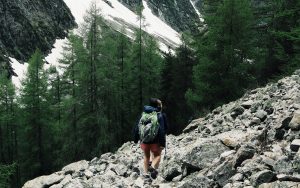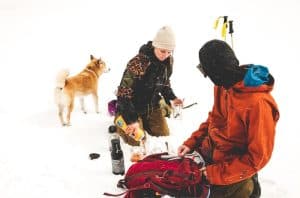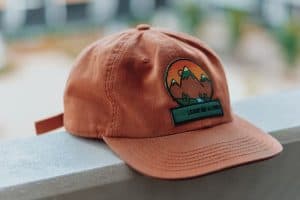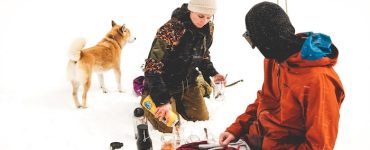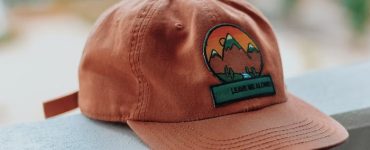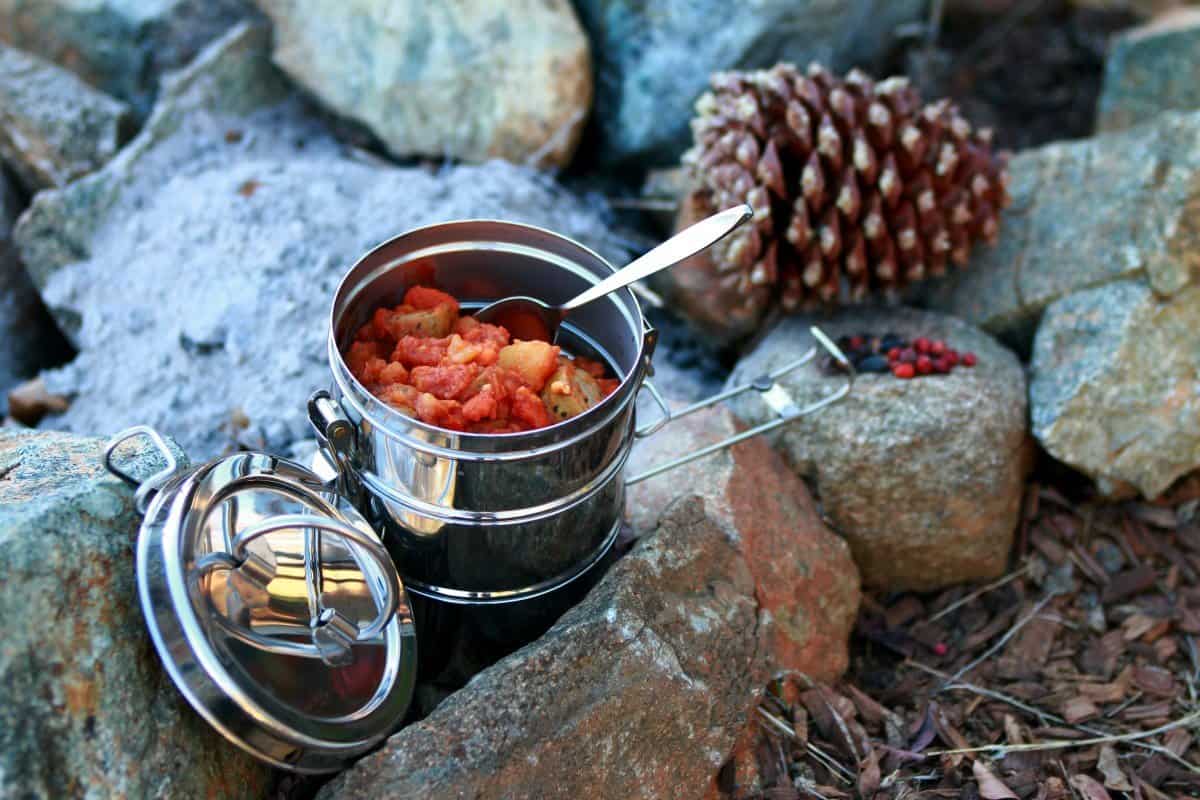Going on a hike for the first time is not something you do out of whim. It takes careful planning and preparation to ensure that you will have the best experience, and stay safe during your adventure at the same time.
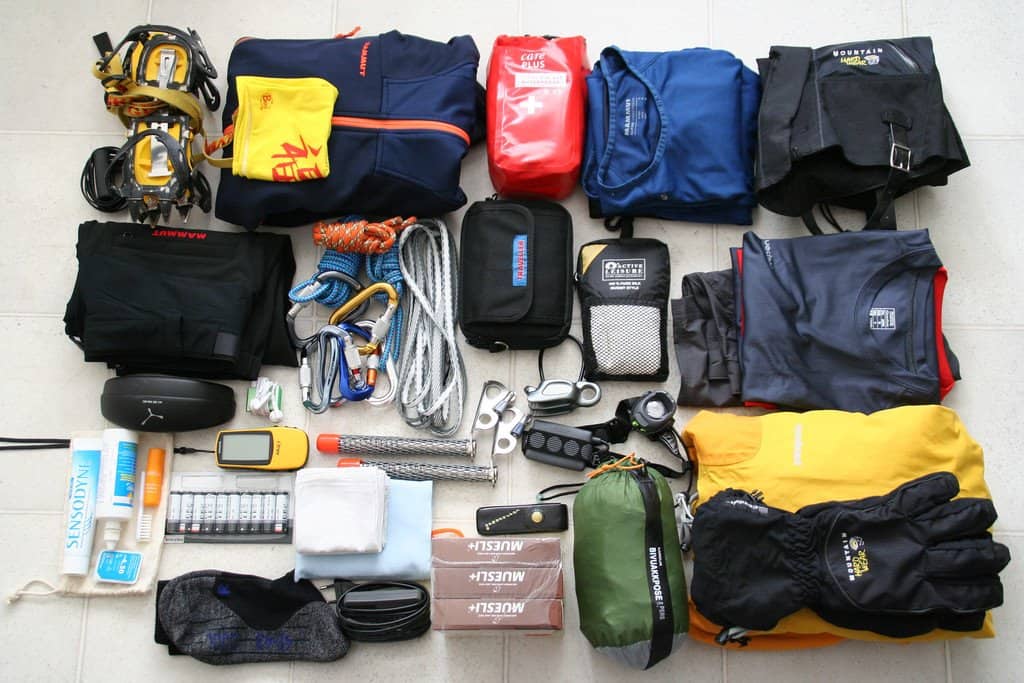
If you are a novice in the world of hiking, this short guide on day hiking gear list will make it possible for you to have the most memorable time of yourself in the great outdoors.
Our Most Day Hiking Gear List – Important 12
Here are 12 essentials for your hike that you must always have with you on any hiking trail.
# 1 – Daypack
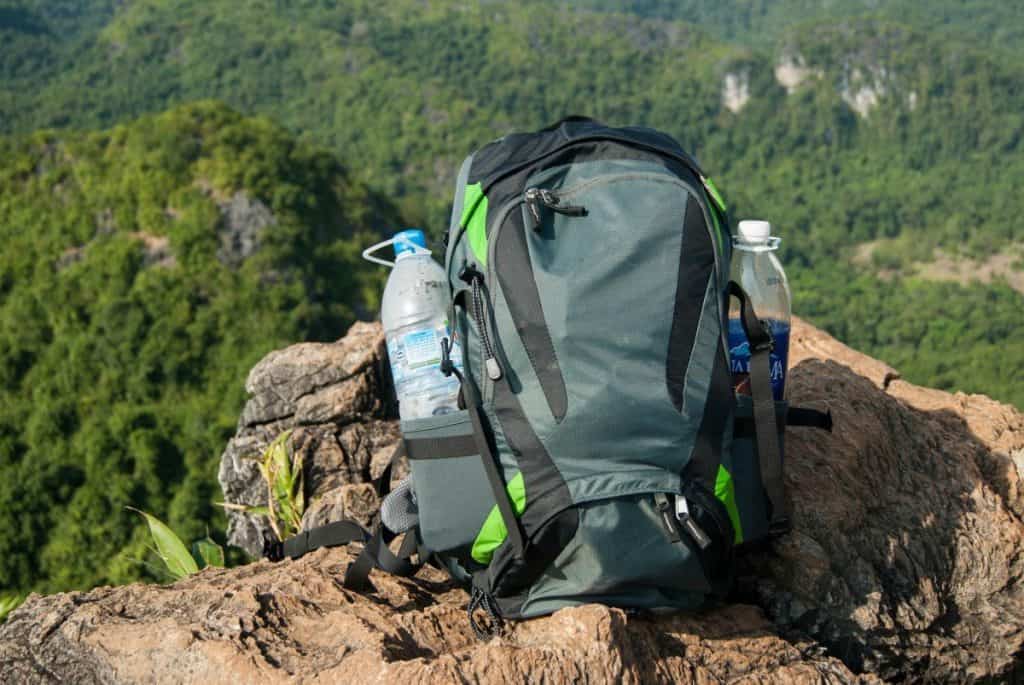
Obviously, you will need a good backpack where you will put all of your hiking gear. For overnight adventures or several days spent in the wild, a full-fledged backpack is advisable, while hikes that last just one day will need a good daypack.
# 2 – Water
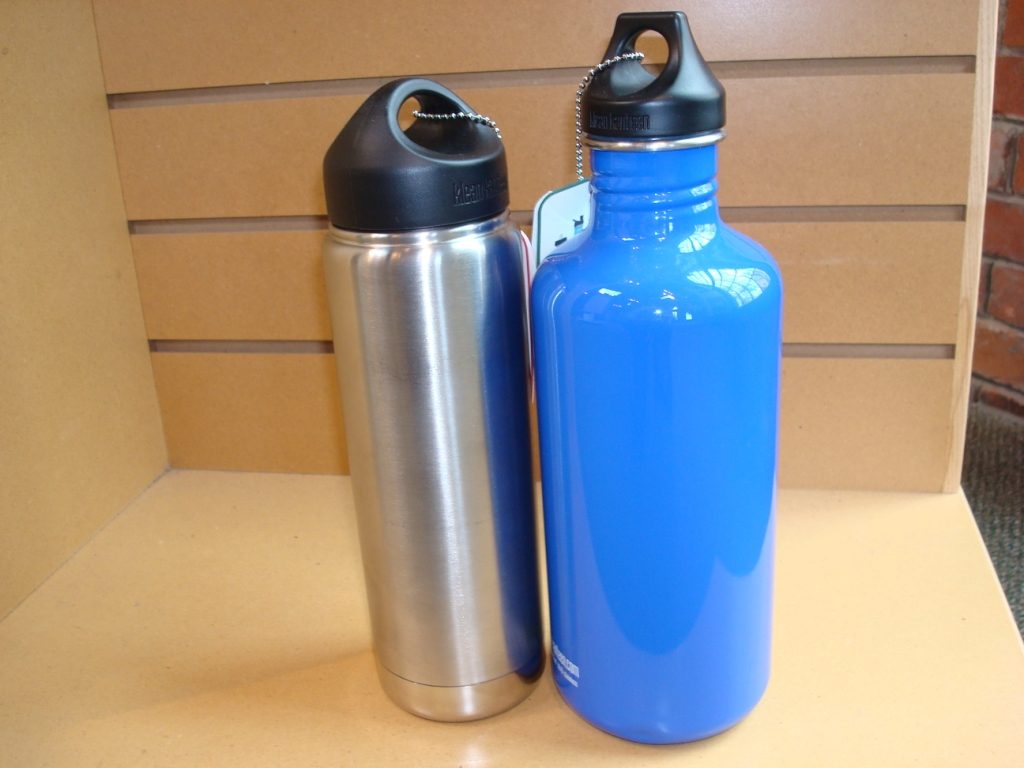
After your backpack, water supply is the next essential you can never live without. A hydration reservoir will be your ideal choice here, or you can also bring several water bottles.
# 3 -Extra food
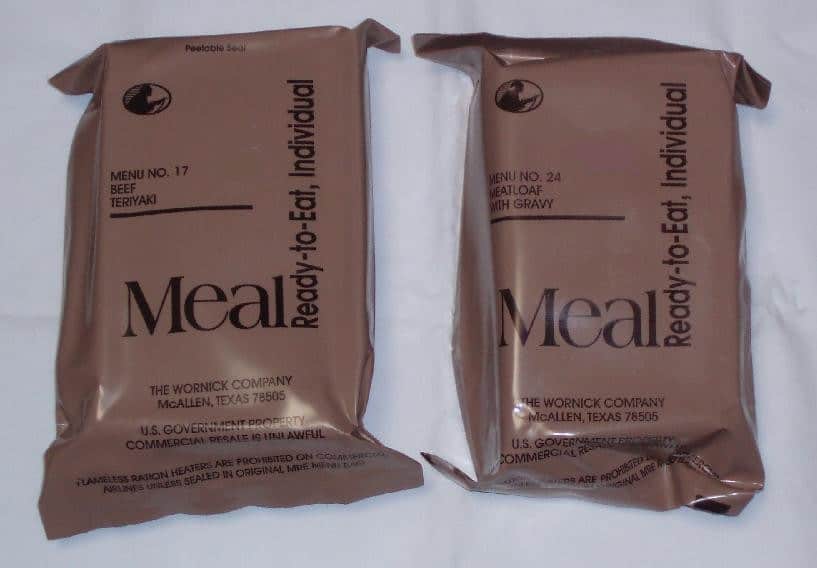
It doesn’t matter if you will be preparing your own sandwiches or bring some packed dehydrated meals, you will always need some food for your hiking adventures.
# 4 – Extra clothing
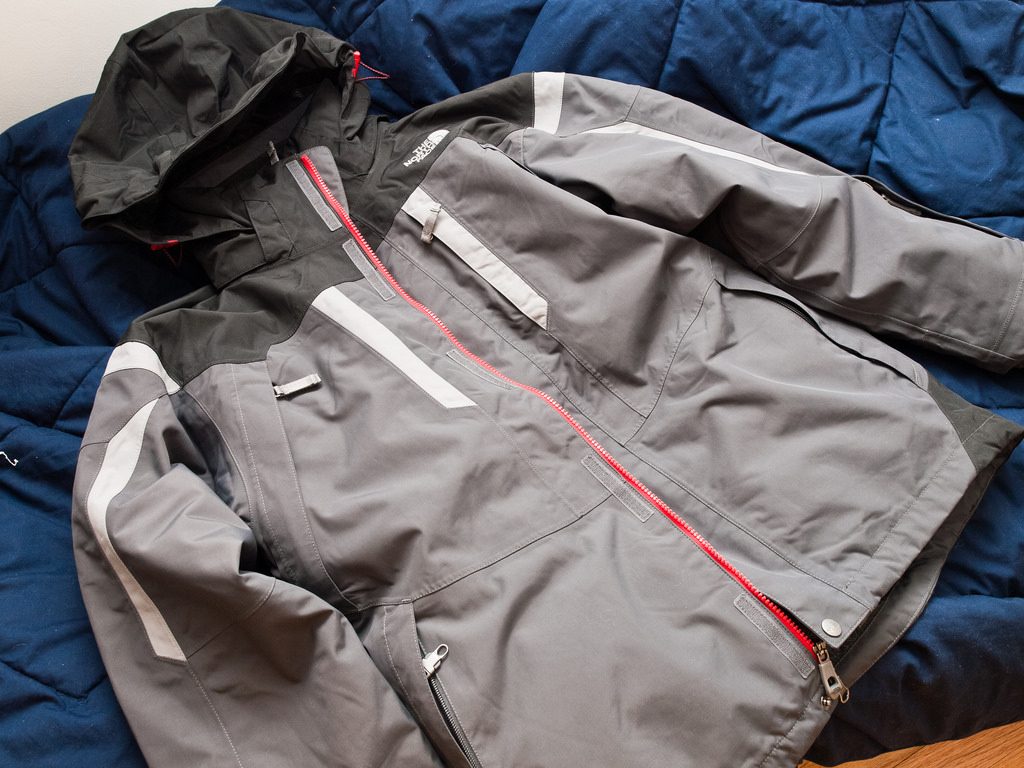
It will be a great idea to have a waterproof shell in case it suddenly rains. You can also bring some plastic ponchos for added protection. It won’t hurt to have some extra pants, shirts, and shorts, either. You will never know if you will need these or not in the first place. Once the weather turns colder all of a sudden, you will definitely need these extra pieces of clothing.
# 5 – Flashlight
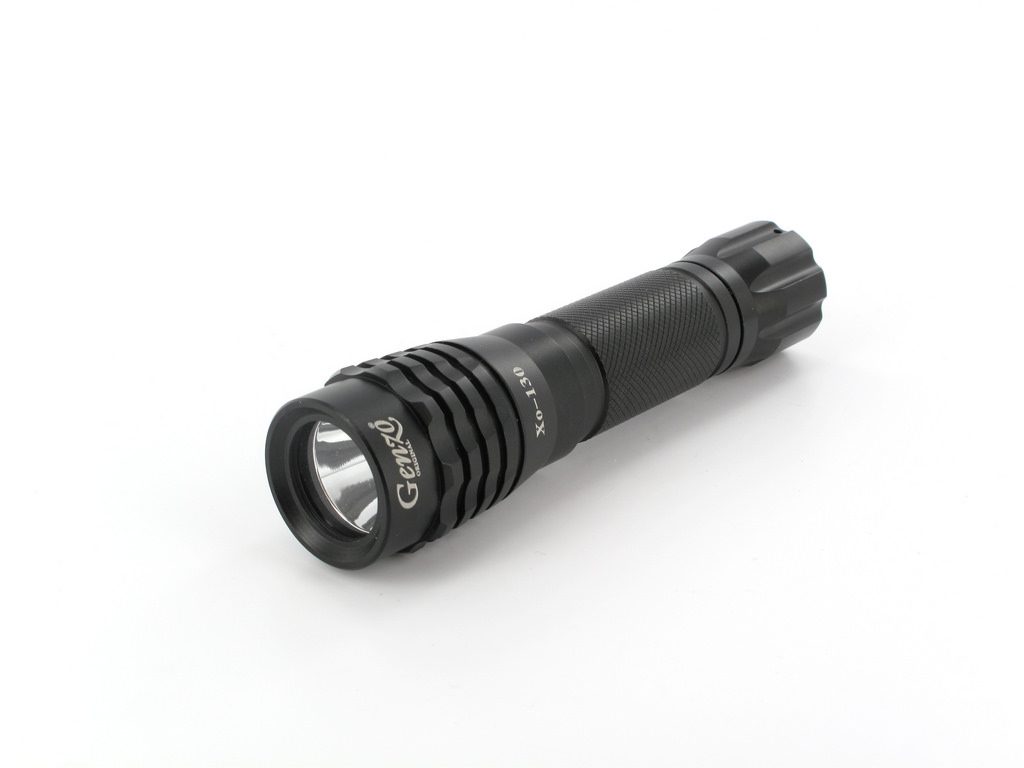
If ever your hike extends well after dark, you will need light for you to see the trail. This is also advisable to ensure your safety. While it is good to have a small flashlight, a headlamp can be more convenient as it will free up your hands, particularly when you are using trekking poles.
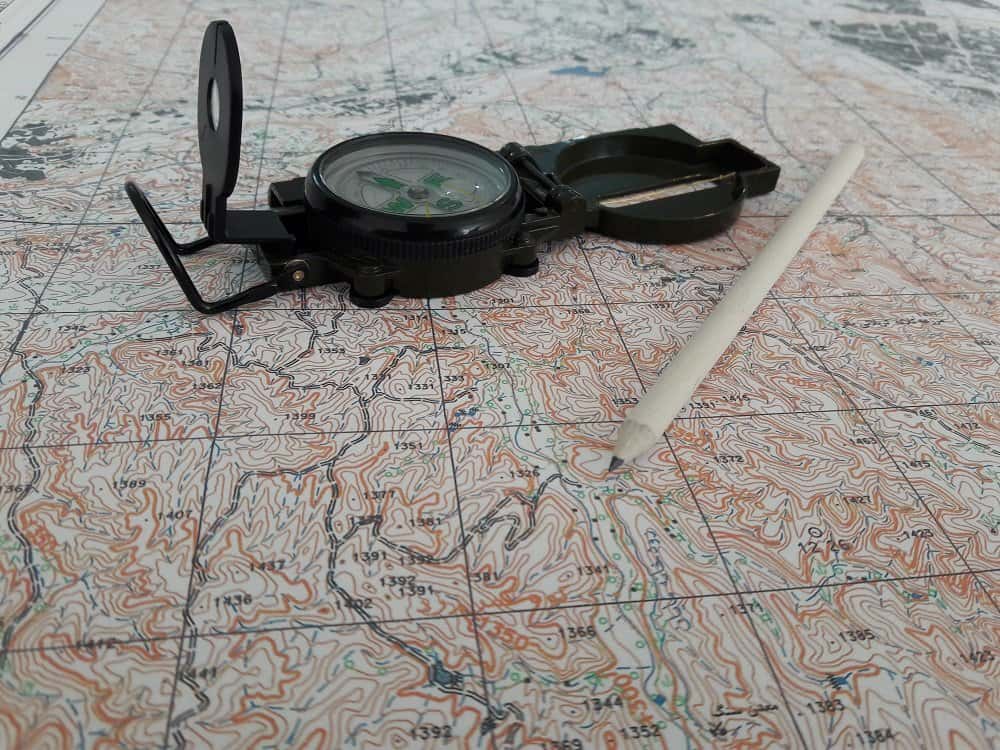
A map and a compass are essential tools for navigation that you must always have with you in the event that things go awry and you find yourself lost in the wilderness. GPS units are great yet these could run out of their battery power. Thus, it is always to have some fall back with the use of a physical compass and map to help you find your way around.
# 7 – First aid kit
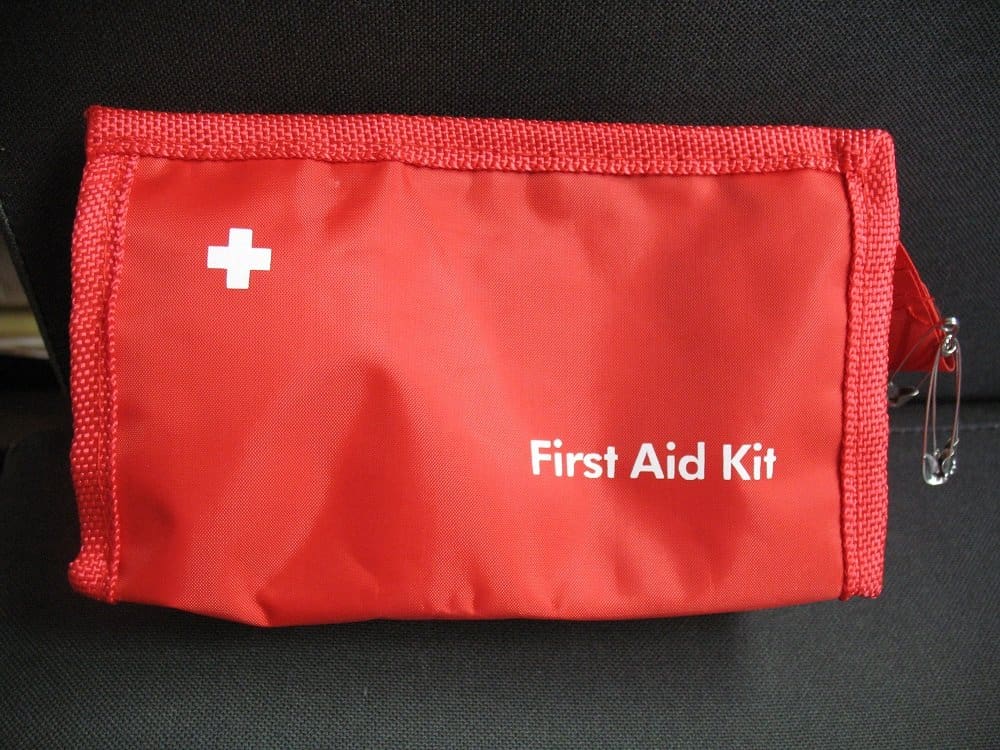
It is a must to have a small first aid kit in your backpack. See to it that it contains different varieties of bandages, tape, gauze, aspiring scissors, sanitary wipes, and ointments. Some other things you might want to add are a snake bite kit and a CPR mask.
# 8 – Knife
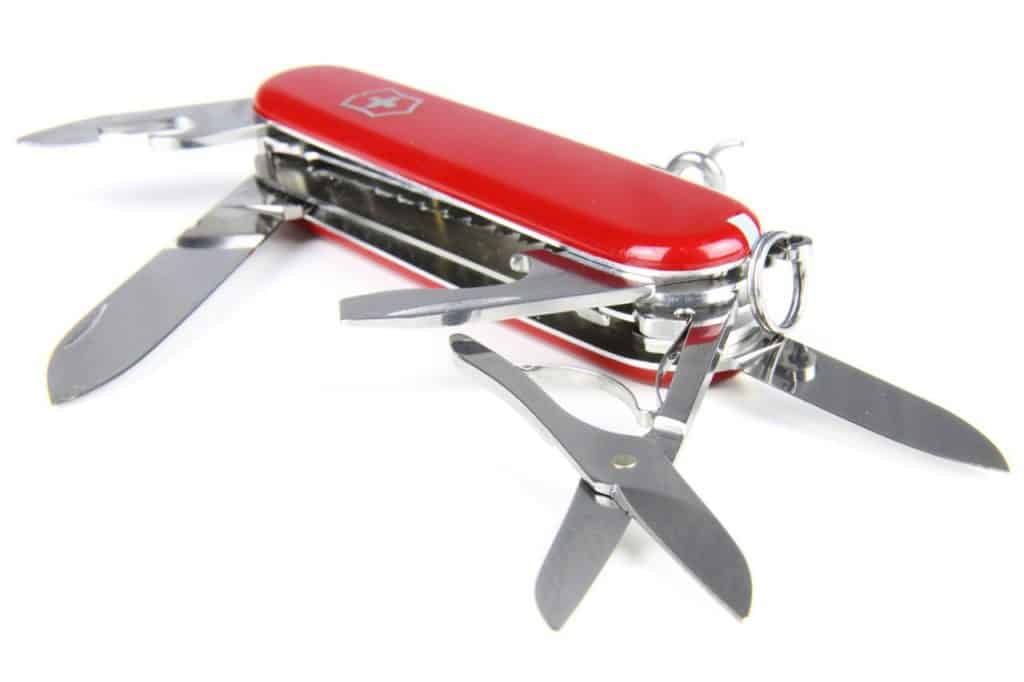
The most ideal option for hikes is the classic Swiss Army Pocket Knife with several tools in it.
# 9 – Matches

You can never tell when you will need fire in case or emergencies. These will also come in handy for boiling water and cooking food. The best option to use is the waterproof matches.
# 10 – Whistle
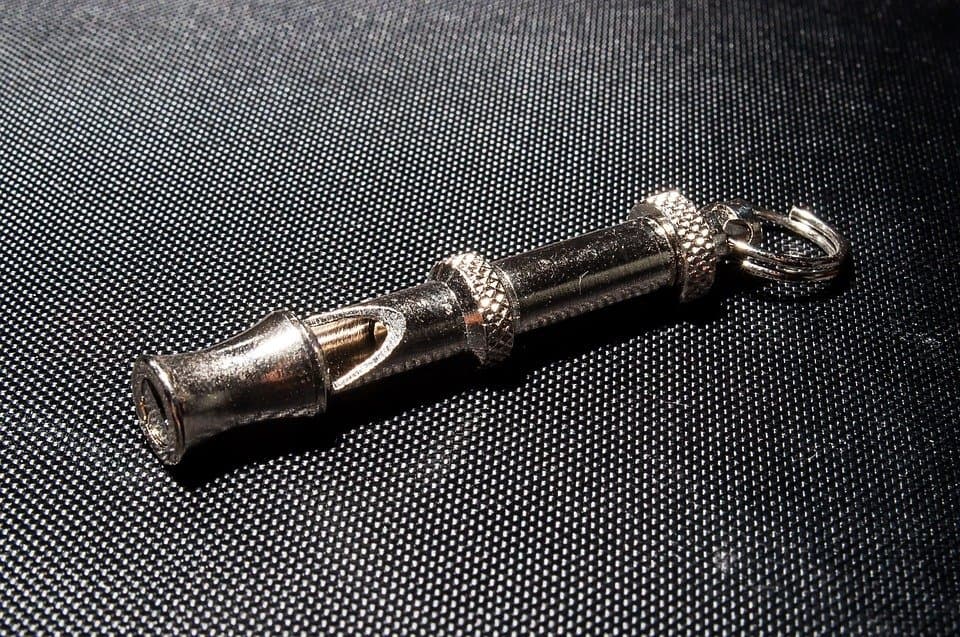
Fun Outdoor Quiz
For animal encounters and other emergencies, a whistle can be very useful. Whistles will also let animals aware of your proximity which can then help you avoid encounters with any wild animal during your hike.
# 11 – Hat
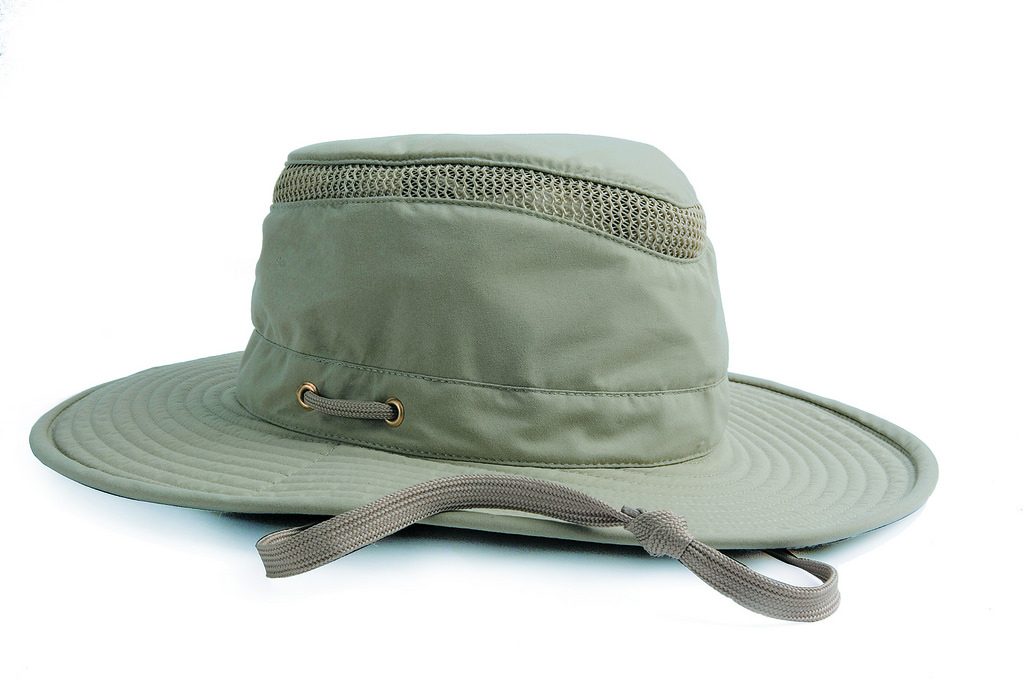
You will surely need some type of hat that will keep your head stay cool and protect your face from the harsh sun.
# 12 – Blanket

In case you’re camping and it’s freezing outside, you might want to wrap yourself up with a thick blanket. If you want to add a little bit of trademark to your blanket to avoid getting it mixed up with your friends, you can get a personalized photo blanket for yourself.
Clothing Advice: What to Wear?

You will never be able to enjoy your hike when your clothes are not appropriate for the weather. Here is a quick guide about the proper clothing for different weather conditions:
Spring
During a hike in moderate temperatures, opt for clothes that can make you stay warm without necessarily overheating. You have to choose clothes that will let you stay dry. Go for a lightweight T-shirt made of synthetic fiber such as polypropylene or polyester because these materials wick off moisture from your body to let you stay dry.
You can also add a light, water resistant, and insulated long sleeved fleece or jacket depending on the weather. You can put the other in your pack in case you require some extra layer. It is best to wear long pants during this season, and pick one made of quick-drying materials, Socks made of synthetic material or wool which can wick moisture are a great choice.
Summer
Synthetic fabrics which can keep away moisture from your body can help you stay cool and avoid overheating. During warm temperatures, you can opt for pants or shorts made of synthetic fabrics. Convertible hiking pants can let you convert them into shorts once you warm up. Go for light synthetic or wicking wool socks. The conditions and the hike itself will dictate the rest of the items you will have to bring.
If you will summit a peak, temperatures will be cooler at higher altitude so be ready for these changes by bringing a water resistant jacket and long sleeved fleece. Search for items which can block rain and wind and insulate you during your high altitude activity. Some essentials for hot weather include a wide brimmed hat, moisture wicking clothing, and sunscreen.
Fall
The clothes you wear for fall hiking will be the same to your clothes during your spring hike. Layers will still be the key here. Start with your light T-shirt made from synthetic materials. Put on a long sleeved fleece which zips at the front, possibly one with hood. For extra layers, your best options are a wool sweater or flannel shirt. Bring a wind and water resistant jacket in your backpack to be ready in case it rains.
During such temperatures, it may be a good idea to layer your socks. Go for a pair of thin wool socks or socks made from synthetic material, and put on another thicker pair on top of them. Finish your clothing with gloves and a hat.
Winter
For hikes in cold temperatures, you can start with your base layer of any wicking material such as wool or polyester. It must fit close to the skin without being too tight to the point that you can no longer move. It is recommended that you put on a base layer on both your lower and upper body. Then, add extra insulating layer that’s thicker than your base layer. The wicking fabrics are the best option.
It’s the layer that you’ll take off once you warm up and put back on once you stop cooling and moving off. Select weather resistant pants that are made of synthetic materials regardless if you add another insulating layer on the lower body. For feet, thin layer sock following by another thicker sock is highly recommended.
A windproof and waterproof jacket will ready you for some changes in precipitation and weather. Your body would cool off once you hike downhill and the outer layer would radiate heat through holding air close to the body. Down coat is a good for warmth, yet during in wet conditions, it won’t insulate. Gaiters are good for wet and snowy conditions.
Whenever you plan for a hike, regardless of the temperature and season, remember that the weather isn’t always predictable. Depending on the altitude and length of your hike, you would want to ready for various temperatures.
Footwear Advice: Hiking Shoes vs. Boots
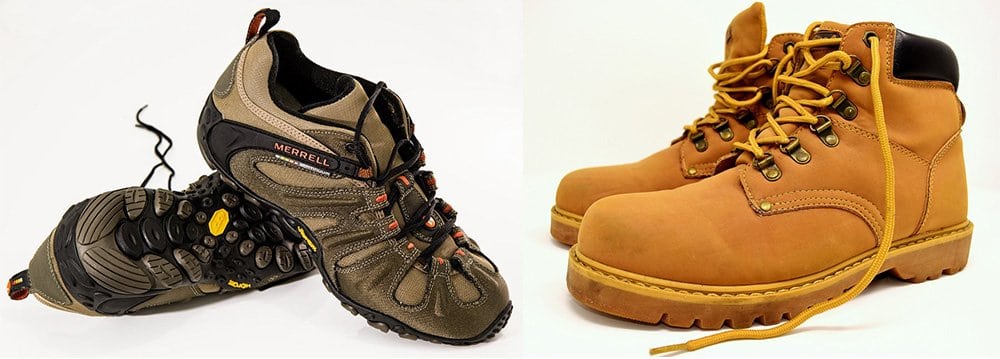
There is a debate in the world of hiking and everybody seems to have their own opinion. Are hiking shoes or boots better for the hiking trail? With a lot of available models, it is hard for casual hikers to decide which to wear hiking.
Over a decade, there has been a revolution in the industry of outdoor footwear. Previously, everybody wore clunky and big boots hiking as well as wore tennis shoes on the streets. Today, hiking shoes and lightweight trail running shoes surge in fame.
But, majority of people don’t realize that the modern hiking boots aren’t the same backpacking boots that they once were. You may find lots options that durable, light, and much flexible compared to before.
Pros and Cons of Hiking Boots
- Perfect for intense climates, steep elevation, and long distance hikes.
- Easier on the feet if lugging around the heavy packs.
- It prevents insects and debris from getting in the boots.
- The ankle collar helps stabilize ankles with added weight.
Pros and Cons of Hiking Shoes
- Perfect for camp shoes and day hikes.
- More breathable without ankle collars.
- Offers lots of support for casual hikers.
- Weighs lesser than the boots and requires less energy for every step.
Hiking Shoes or Hiking Boots – The Major Arguments
It is almost up to one’s personal preferences when it comes to reality. What do you prefer? Do you like hiking boots or hiking shoes? Several people are accustomed in wearing boots while some prefer how lightweight shoes are on a hiking trail.
Hiking shoes or also referred to as trail shoes are like the cross between hiking boots and tennis shoes. It is as if you took all rugged aspects of the boots from rugged outsoles to cushioned footbed and removed ankle collar. If some were to pinpoint one reason why others opt for hiking shoes over hiking boots, it is due to weight. The hiking shoes are always lighter than the boots and numerous hikers feel they’re more nimble.
Yet, it isn’t the fleet of foot, which selects trail shoes. The casual hikers tend to go on the day hikes at the local parks can benefit from the light hiking shoes. On well-maintained and flat hiking trail, there is no to wear boots. The shoes are more breathable and much lighter and offer lots of support in many situations.
When it comes to hiking boots, the classics are still classics and that’s for a reason. Hiking boots were trusted by the outdoor lovers for years and there is a good reason why the hiking boots do a good job at protecting your feet from some elements. The main difference shoes and boots is the ankle collar. It wonders to keep the nature out. Once you walk on the rugged terrain, particularly off trail, the debris will get kicked up.
If you are somebody who wants to adventure through sodden bogs or deep snow, you are better off with the boots. Not only boots keep out the trail debris, yet the ankle collars keep out the water. But, it isn’t like the waterproof exterior keeps the water out entirely. Ankle collars provide a barrier that further up your legs than shoes, so once you step in creek or puddle up to your ankle, the feel would stay dry when compared to wearing hiking shoes.
Most hikers report that the boots are recommended when hiking a steep path. An extra support around an ankle could make walking uphill much comfortable, most particularly if you are ascent would take over several hours. An added ankle weight and padding also helps stabilize hikers carrying a heavy pack. If you are backpacking, an increased weight becomes harder on your ankles and feet. It is advised to wear boots unless you are carrying light daypack.
Hiking Dog Gear
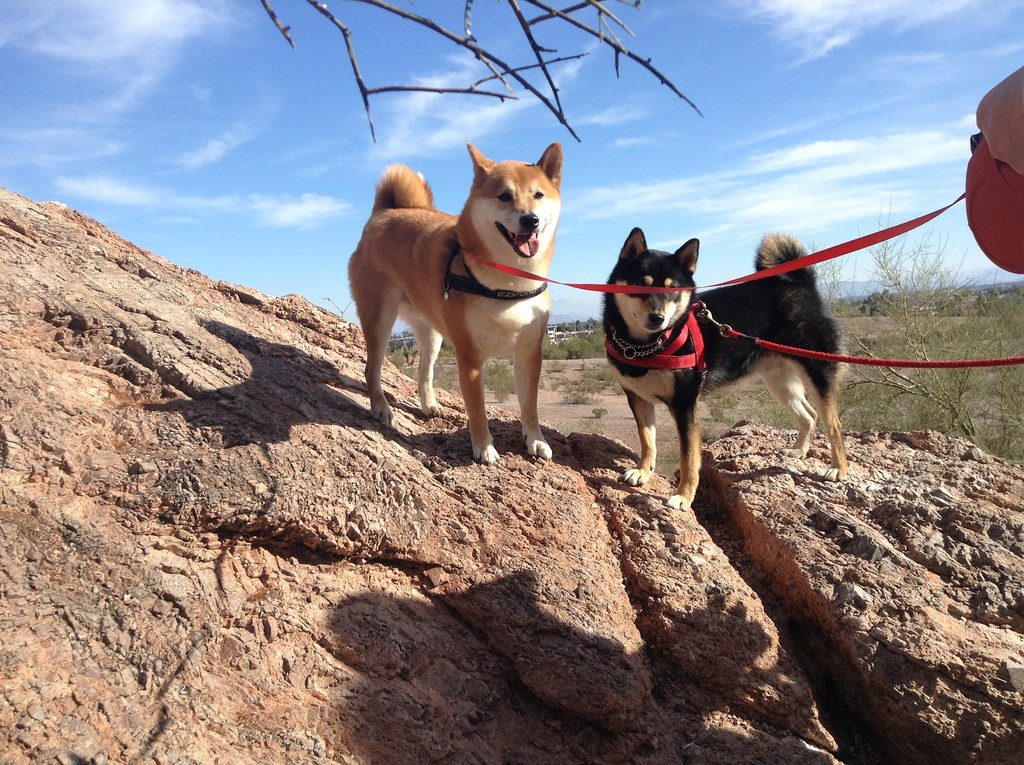
If you have a dog that is also as adventurous like you, hiking with your dog can be a great experience. But, if it is your first time to hike with your dog, you should know that you need some hiking gears for your dog.
- Water Bowls
See to it that you bring lots of water. If you are thirsty, the dog is also thirsty. Even if you are not, give him some water every thirty minutes.
- Trail Packs
Equip your dog with his own trail pack. The dog packs are constructed to attach around the body and configured with pockets and pouches to hold gear. As the golden rule, a healthy and young dog could carry up to a quarter of your dog’s body weight. You will know best whether the dog could carry less or more than that. When in doubt, discuss this with your veterinarian.
- First-Aid Kit
A veterinarian will not be handy when you are on the trail, so a first aid kit for your dog and knowledge to use it are important. The organizations like Red Cross are a resource for the dog owners, offering checklists, and selling the first-aid training materials and kits. See to it that you add some special medicines that your veterinarian has given you to your first aid kit. Another addition is clean and old wool socks that could be taped on bootie bandages in a pinch.
- Leashes
Regardless of how obedient the dog is, a lot of trails and parks require dogs to be leashed. No matter how familiar you are with trails, it could be a great idea to keep your dog on a leash to direct him away from some poisonous plants, animals, and several hazards.
- Insect Repellent
You should be aware that several animals and people have strong negative reactions to particular insect repellents. Thus, before leaving home, dab a repellent on the patch of the fur of your dog to see the reaction of your dog to it. Observe if there are signs of drowsiness, nausea or lethargy.
Consider restricting repellent applications to the places that dog cannot lick, around the areas, neck’s back, and shoulders, which are near the logical places that mosquitoes would be searching for an exposed skin to bite. Never forget to check the entire body of your dog for foxtails, ticks, and some trail troublemakers after the hike.
- Sleep System
It starts with the tent’s size. A piece of the crib-size comforter and closed-cell foam make a good backcountry dog bed. Plan on doing some backyard sleepouts, so your dog would be comfortable with what sleep system you have chosen before hitting the hiking trail.
Other Essentials for Your Hiking Dog Gear
Many of the usual gears of your dog may come along. You will also require some items for the backcountry:
- Cooling Collar
Every dog struggles to dissipate heat so this accessory is worth an added ounce when temps begin to climb.
- Dog Coat
If the temperature is low or your dog does not have a thick fur, you should bring a quality made dog coat.
- Safety Lights
It’s a good way to help you keep the tabs on your dog during night time and after sunset potty breaks.
- Nail File and Clippers
The dog paws may wreak havoc on the tent fabric, so it is essential to keep the nails trim and neat.
- Dog Towel
You require one that’s dedicated as a towel for hiker to wipe off the paws that are muddy before the dog joins you in your tent. Bring another towel to dry the fur, especially if your dog loves to jump in the lake or soaked in the downpour.
- Booties
These offer protection from the sharp rocks, snow, and thorns. It isn’t uncommon that for dogs to lose booties. Therefore, if you consider booties instead of toughening up the paws on the training hikes, you have to pack spares. You will also have to allot time for dogs to get used to wearing some booties.
- Water Containers
Dog’s hydration is handled best by fresh water that you carry. There are several dog owners who train dogs to drink once they pour from the bottle. A collapsible and lightweight dish works as well.


